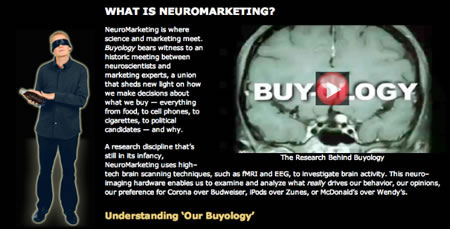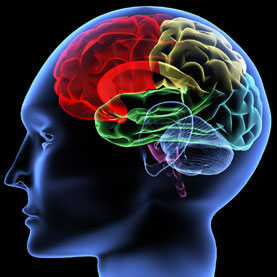
In the journey of brand strategy—trying to define brand direction and orientation—there is an alignment between stance, intention, personality and direction: future visioning. It’s a synchronism of story—which invariably involves humans and their build-out of the brand.
What that might come down to is an examination of the core principles—the cultural character of the humanity around the brand. People make brands—they’re built by people. For people. This premise is a point of contention—some strategists reject the idea of a humanized nexus of emotionally aligned brand thinking. A brand can’t be human. But I might propose that given all the notations of interconnectivity between positioning, persona, archetype and chromosomal metaphors, allegories of DNA, etc., lend themselves a further articulation of the personality of brand characterization.
And there are some, that offer the postulation that even having a relationship with a brand is an examination of, and buying decision towards branding that works its way into deeper consciousness. We propose that if there are all of these components in building-out the brand that are aligned to emotionality, then that deeper substrate of brand psychic space is a worthy strategy.
If one considers that the journey really attaches to the emotional construct of these principles—the alliterative rendering of brand relevance [fundamental utility], brand resonance [emotional enchantment], and finally: relationship [the storytelling of the brand]. The relatedness of relevance and usefulness begins that equation, which evolves to evocation of memory and experience: resounding—the song of enchantment; and finally, the brand storytelling and the ability of a brand to become personally connected—“this is my brand and it’s about my choice and it reflects me, what I believe in,” what’s inspiring. In some cultures, the brand can be a study in classism—”buy a brand for this status.” That might be voiced as “I own this brand, before, now I own this brand—I belong this strata now.” Martin Roll studied this in his blog observation: “The importance of luxury brands in Asia shows consumers trying to differentiate themselves from other members of society through iconic brands such as Giorgio Armani, Chanel, Louis Vuitton or Gucci. A large portion of nearly every major luxury brand’s turnover comes from Asia.
The differences between Western and Asian cultures are not black and white. It would be too simplistic to label all Asian cultures collectivist and Western cultures to be all individualist.”
Radha Chahda studies this proposition extensively. An overview of her propositions can be found in: “The Cult of the Luxury Brand is the first book to explore how and why an amazing “luxeplosion” is rocking Asia, sweeping up not just the glitzy upper crust, but secretaries toting their Burberry bags, junior executives sporting Rolex watches, and university students in Ferragamo shoes. Hong Kong boasts more Gucci and Hermes stores than New York or Paris. China’s luxury market is growing with such gusto.”
Brand and persona synchronize in the psychic space of marketing—which, too, reaches to electrical impulses, neural networking and perceptions. And that comes, too, the nature of the buy.
This goes back to an earlier study and essays; as well as correspondence with Martin Lindstrom. Towards that study, it’s the alignment for humanized brands, human interpretations, the soulful brand—and purchasing decisions: the link to distinguishing attachment in biological analysis. The idea of the psychic space—brand brainpower and impressionability. Is reaction just that: re-acting? Could buying be mindless? I might suggest that it was a intertwining of many elements—a humanized, human interpreted brand and how people relate to it.
One thing is abundantly clear, the concept of human brand marketing and the modeling of spherical promotion of ideas, and ideals, in the storytelling of brand and connectedness to community is a big surge for himself as the living practicing principle/principal.
Lindstrom has been an expert promulgator of his visioning—and alignment with pushed editorial and online digital video—is just the right rippling burst to get the messaging out. One is theory, the other is the marketing alignment [it’s a continuing journey for him]—in this earlier instance, moving from the principles of brand boosting—sensuality being one of them, the sensational qualities of brand experience—to another, creating an entire marketing strategy around that positioning (the neuroscience of the “we” of the consuming heritage and our buying history.)
To Lindstrom’s notations, purchasing process is a strategy of neuroscientific truth telling: it’s the real reel-in, about the buy. But what’s interesting is the notion of a certain newness in the generation of the study of how people react in the process of buying, Lindstrom touts himself as the world’s greatest marketer—and if you look at what he does with his own brand, you might grasp why. Research, build a theory and market around it, tactically seeing the value in advancing that research and building a publishing premise around it, finally designing a newly inspired consulting practice from it.
Nice alignment, and perhaps one of the most truthful linear sequences of brand management, attached to a “human” that I’ve seen. Buying, to his sentiments, relate to this published overview: “How much do we know about why we buy? What truly influences our decisions in today’s message-cluttered world? An eye-grabbing advertisement, a catchy slogan, an infectious jingle? Or do our buying decisions take place below the surface, so deep within our subconscious minds, we’re barely aware of them?”
“In BUYOLOGY, Lindstrom presents the astonishing findings from his groundbreaking, three-year, seven-million-dollar neuromarketing study, a cutting-edge experiment that peered inside the brains of 2,000 volunteers from all around the world as they encountered various ads, logos, commercials, brands, and products.”

How the agency / book / person thinks: “Until now, most marketing, advertising and branding strategies have been built on qualitative and quantitative market research. The fact is, roughly 90% of our consumer buying behavior is unconscious, and we can’t actually explain our preferences, or likely buying decisions, with any accuracy. So market surveys and customer questionnaires are of dubious value. As brands pour millions of dollars into advertising that may or may not hit the mark, we realize that the time has come for a paradigm shift. Advertisers need to know what directs our buying decisions. NeuroMarketing will help us make the transition towards understanding the truth and lies about why we buy.”

Imagery from Buyology
It circumvents the question and answer approach of conventional research. A non–verbal research method, NeuroMarketing bypasses a subject’s claims by going straight to the source and examining the consumer’s brain responses.
Today, we still know so little about the brain. But, in years to come, as we learn more and more about the brain and its functions, we will be able to decipher even more from observable brain activity. We will have an ever–expanding framework within which to interpret data. You could compare what we know of the brain today to what Christopher Columbus understood of the globe in the 15th century. His charts represented a great leap forward in civilization’s knowledge of the world but, with hindsight, we can see how much more there was yet to discover. Our current knowledge of the brain is similarly primitive. NeuroMarketing, the marriage between neuroscience and marketing, is opening windows on our consumer lives and revealing, for the first time, our ‘buyology’.
Like all emerging fields, NeuroMarketing advances to other consulting strategists—Nielsen, for one. They articulate their premise as: “That’s where consumer neuroscience comes in, a field that Nielsen has been in for nearly 10 years. Through neuroscience, we help brands understand consumers’ non-conscious engagement and responses, which they can use to create stronger connections with their audiences.”
The Harvard Business Journal offers a precise directive: “Nobel Laureate Francis Crick called it the astonishing hypothesis: the idea that all human feelings, thoughts, and actions—even consciousness itself—are just the products of neural activity in the brain. For marketers the promise of this idea is that neurobiology can reduce the uncertainty and conjecture that traditionally hamper efforts to understand consumer behavior. The field of neuromarketing—sometimes known as consumer neuroscience—studies the brain to predict and potentially even manipulate consumer behavior and decision making. Until recently considered an extravagant “frontier science,” neuromarketing has been bolstered over the past five years by several groundbreaking studies that demonstrate its potential to create value for marketers.”
Forbes.com outlines testing, case studies and results that offer further insight—could consumer learnings be improved with neuro-scientific testing reviewed, even to the extent that brain-brand studies are more deeply accurate than conventional moderated focus sessions. It’s more truthful—insights aren’t encumbered by shared focus colleagues—it’s not “what you think while in a group, it’s what you think—you.”
It’s still intertwining the modeling of the humanized brand, psychic response and reaction. Brand meaning. Test and measure. Formalize insights. Define. Articulate strategy, identify tactical outcomes.
One might ponder that these testing methodologies relate to highly emotional and visible interpretations—conceptions that reach into the cortex of the brain, in the varying sectors of their assessment—these link to their studies of loyalty and commitment. What about that—these attachments—other forms of memory?
Still, too—the sense of strength, heritage and legacy—buying reactively, that’s the sole (and soulless proposition of action, reacted)? Bridging psychic associations—what comes to mind, what flows to memory, and in the imagery, what feelings are buoyed?
The top 20 neurally responsive brand test results—in an overview summarized by Roger Dooley:
| Top 20 Most Desired Brands in the World | ||
| Rank | Women | Men |
| #1 | Johnson & Johnson | Crest |
| #2 | Sony | BMW |
| #3 | Kleenex | National Geographic |
| #4 | National Geographic | Panasonic |
| #5 | MasterCard | Hyundai |
| #6 | Kleenex | |
| #7 | Amazon | Coca-Cola |
| #8 | Visa | Microsoft |
| #9 | General Electric | Tide |
| #10 | Toshiba | Lexus |
| #11 | Crest | Apple |
| #12 | Microsoft | Bed Bath & Beyond |
| #13 | Disney | Ford |
| #14 | Target | Animal Planet |
| #15 | Tropicana | Hitachi |
| #16 | BMW | Mercedes-Benz |
| #17 | Febreze | FedEx |
| #18 | Ford | Procter & Gamble |
| #19 | Olay | Hallmark |
| #20 | Chase | Geico |
I ponder the links to commitment and loyalty—are there deeper links? Loyal, to relationship, in the construct of legacy is merely “legal”—from the Latin lex — to legalem, the old French—loial, French—and later, in the mid 16th century, subjects to the sovereign. But commit is different, this is a string tied to relationship.
In speaking with clients over the course of the last number of years, what I find intriguing is the nature of the promise. Really, promise is mission—it is what is carried out, in earnest, in support of the relationship.
And the idea of relationship is something to the Latin, relatus—a reference—from the “relating,” it is a carrying, it comes as a bringing back. Interestingly, the notion of the psychic bridge to brand, or to any relationship, is what you carry out, and what you carry forward—or bring—back. Some, to the neuroscientific imperative, seem obvious; others less so. There are so many testing types, result gatherings, presumptions and outcomes of massed arrangements of data.
In the end, it’s what feels right. I mean that in the truest sense of the word—to the listing, the interpretations, the listening and the speaking of the brand or human truth—what feels correct, true, right? In the end, there is the interpretation of data in the context of instinct and intuition, the gut reaction founded on a marketer’s expertise.
Expand the testing criteria to the rightly statured configuration and you’ve got massing that will be conventional. But where’s the surprise?
For the women—the nurturing caring mother archetype of Johnson & Johnson, the number one preference to brand connection, links to the feminine principles of that place in the heart of the matriarchal. Men, the sequencing is stranger and less recognizable. First off, Crest (heritage?), BMW—that distinction reaches to the edge of action, speed, the design of masculine sensibility in the combining of these personal elements. National Geo—the explorer, the adventurer, the journeyer.
The bridge from the psychic and nearly unconscious reaction makes sense to the idea of the gathering intention of intuition. But what I find compelling is the conscious space, the absorption of the added content of the story, locality, physicality, the sensate space, all of which support a more wholly felt relationship.
People react. People sense. People intuit. People gather. The holism of experience and impression couple with the neural—the feed is whole.
As are people.
Whole beings. And the stronger brands are selfsame: holistic entities.
T I M | GIRVINOsean